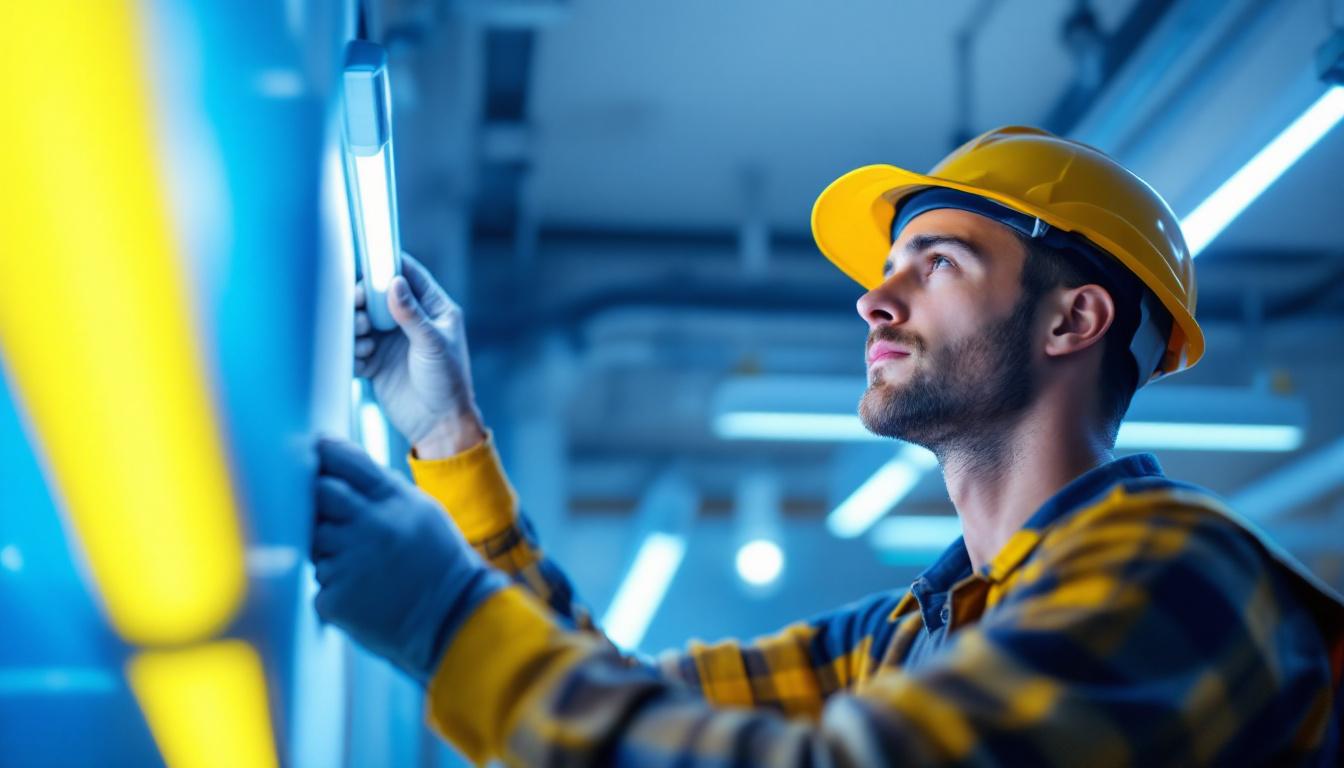
In the ever-evolving world of outdoor lighting, the integration of sensors has emerged as a transformative trend. For lighting contractors, these innovative devices not only enhance the functionality of outdoor lighting systems but also offer a myriad of benefits that can significantly impact project efficiency and client satisfaction. This article delves into the various types of sensors, their applications, and how they can revolutionize the way lighting contractors operate.
Sensors serve as the backbone of modern outdoor lighting solutions. They enable lights to respond dynamically to environmental conditions, which enhances both energy efficiency and user experience. Understanding the different types of sensors available is crucial for lighting contractors looking to stay ahead in the competitive landscape.
There are several types of sensors commonly used in outdoor lighting systems, each designed to serve specific functions. The most prevalent types include motion sensors, daylight sensors, and timers. Each type offers unique advantages that can be leveraged in various lighting applications.
Motion sensors detect movement within a designated area and activate lighting accordingly. This feature is particularly beneficial for security lighting, as it ensures that lights are only on when needed, thereby conserving energy and reducing operational costs. For contractors, installing motion sensors can also enhance the appeal of a lighting system to clients who prioritize safety and convenience. Furthermore, advancements in technology have led to the development of smart motion sensors that can differentiate between humans, animals, and vehicles, allowing for more tailored lighting responses. This capability not only improves security but also minimizes unnecessary activations, which can be a nuisance in residential areas.
Daylight sensors, or photo sensors, measure the ambient light levels and adjust outdoor lighting accordingly. These sensors can automatically turn lights on at dusk and off at dawn, ensuring that energy is not wasted during daylight hours. For lighting contractors, incorporating daylight sensors into designs can lead to significant energy savings, making systems more attractive to environmentally conscious clients. Additionally, some daylight sensors can be programmed to adjust the intensity of the lighting based on the amount of natural light available, providing a more nuanced approach to outdoor illumination. This feature not only enhances the aesthetic appeal of outdoor spaces but also contributes to the overall longevity of the lighting fixtures by reducing wear and tear from constant on-off cycles.
The integration of sensors into outdoor lighting systems presents numerous advantages for both contractors and clients. From energy efficiency to enhanced safety, these benefits can significantly elevate the value of lighting projects.
One of the most compelling reasons to utilize sensors in outdoor lighting is the potential for energy savings. By ensuring that lights are only activated when necessary, contractors can help clients reduce their energy consumption and lower utility bills. This not only aligns with sustainability goals but also appeals to cost-conscious consumers. Additionally, the use of smart sensors can optimize the performance of lighting systems by adjusting brightness based on ambient light levels, further minimizing energy waste. This dynamic approach not only conserves energy but also extends the lifespan of the lighting fixtures, resulting in lower maintenance costs over time.
Outdoor lighting plays a crucial role in security, and sensors can amplify this effect. Motion-activated lights deter potential intruders by illuminating areas only when movement is detected. This feature provides peace of mind for homeowners and businesses alike, making it a selling point for lighting contractors aiming to secure contracts in residential and commercial sectors. Furthermore, integrating sensors with smart home systems can enable remote monitoring and control, allowing users to receive alerts on their smartphones whenever motion is detected. This added layer of security not only enhances safety but also empowers clients to take proactive measures in protecting their properties.
Clients appreciate convenience, and sensors enhance the user experience by automating lighting control. With features like motion detection and daylight adjustment, users can enjoy a seamless interaction with their outdoor lighting systems. This automation not only simplifies daily routines but also allows for customizable settings, catering to individual preferences. For instance, homeowners can program their lighting to gradually brighten at dusk or dim at dawn, creating a welcoming atmosphere while ensuring that the lights are only active when needed. Additionally, the integration of voice-activated technology can further enhance user experience, allowing for hands-free control of outdoor lighting, making it even more accessible and user-friendly.
While the benefits of sensors in outdoor lighting are significant, there are challenges and considerations that lighting contractors must navigate. Understanding these factors can help ensure successful implementation and client satisfaction.
The installation of sensors can add complexity to outdoor lighting projects. Contractors need to be familiar with the technical specifications and installation requirements of different sensor types. Proper placement is crucial; for instance, motion sensors must be positioned to avoid false triggers from pets or passing vehicles. Ensuring that the installation is done correctly can prevent future maintenance issues and enhance the system’s effectiveness. Additionally, contractors must consider the integration of sensors with existing lighting systems, which may require modifications to wiring or the use of compatible technology. This added layer of complexity can necessitate additional training or research, underscoring the importance of staying updated with the latest advancements in lighting technology.
Educating clients about the benefits and functionalities of sensors is essential. Many homeowners may not fully understand how these devices work or their advantages. Lighting contractors should take the time to explain the technology, addressing any concerns about reliability or maintenance. This education can foster trust and lead to more informed decisions, ultimately resulting in higher client satisfaction. Furthermore, providing demonstrations or case studies of successful installations can help clients visualize the potential improvements to their outdoor spaces. By sharing real-world examples, contractors can illustrate how sensor technology enhances not only security but also the aesthetic appeal of a property, creating a more inviting atmosphere for family and guests.
While the initial investment in sensor technology may be higher than traditional lighting systems, the long-term savings and benefits often outweigh these costs. Contractors should be prepared to discuss the return on investment with clients, highlighting how energy savings and enhanced security can lead to lower overall expenses. Providing a comprehensive cost-benefit analysis can help clients see the value in choosing sensor-equipped systems. Additionally, contractors should inform clients about potential incentives or rebates available for energy-efficient installations, which can further alleviate financial concerns. By presenting a well-rounded financial perspective, contractors can empower clients to make decisions that align with their budget while also considering the long-term advantages of modern lighting solutions.
The rise of smart home technology has opened new avenues for outdoor lighting. Sensors can be integrated with smart systems, allowing for remote control and monitoring. This integration can further enhance the appeal of lighting solutions offered by contractors.
Smart sensors take traditional sensor technology a step further by enabling connectivity with other smart devices. This allows for advanced automation, such as scheduling lights to turn on or off at specific times or adjusting brightness levels based on user preferences. For contractors, offering smart lighting solutions can set them apart from competitors and attract tech-savvy clients.
With the integration of smart technology, clients can monitor and control their outdoor lighting systems remotely through mobile applications. This feature provides convenience and flexibility, allowing users to adjust settings from anywhere. For contractors, showcasing this capability can enhance the overall appeal of their services, as clients increasingly seek integrated solutions that fit their lifestyles.
The landscape of outdoor lighting is continuously evolving, with new trends emerging that are set to shape the future of sensor technology. Staying informed about these trends can help lighting contractors remain competitive and innovative.
The Internet of Things (IoT) is making its mark on outdoor lighting, with sensors becoming more interconnected. This trend allows for enhanced data collection and analysis, enabling contractors to offer tailored solutions based on real-time data. Understanding how to leverage IoT technology can provide contractors with a significant advantage in the marketplace.
As energy efficiency becomes increasingly important, the development of advanced energy management systems is on the rise. These systems can integrate various sensors to optimize energy usage across multiple outdoor lighting installations. Contractors who adopt these technologies can provide clients with comprehensive energy solutions that not only save costs but also contribute to sustainability efforts.
As technology advances, there is also a growing emphasis on the aesthetics of outdoor lighting. Sensors are being designed to blend seamlessly with fixtures, ensuring that functionality does not compromise style. For lighting contractors, keeping up with design trends can enhance their offerings and appeal to clients looking for both performance and visual appeal.
The integration of sensors into outdoor lighting systems represents a significant advancement for lighting contractors. By embracing this technology, contractors can enhance energy efficiency, improve security, and elevate the user experience for their clients. While challenges exist, the benefits far outweigh the drawbacks, making sensors a vital component of modern outdoor lighting solutions.
As the industry continues to evolve, staying informed about the latest trends and technologies will be crucial for lighting contractors looking to maintain a competitive edge. By investing in sensor technology and understanding its applications, contractors can position themselves as leaders in the outdoor lighting market, ultimately driving growth and client satisfaction.
Ready to take your outdoor lighting projects to the next level? At LumenWholesale, we provide lighting contractors with the cutting-edge sensor technology you need to stay ahead of the curve. Our spec-grade lighting products come with the promise of quality and affordability, ensuring you can deliver the best value to your clients. Say goodbye to inflated markups and hello to hassle-free bulk buying with free shipping. Elevate your lighting solutions today and discover wholesale lighting at the best value that will make your projects shine.

Explore the fascinating science of baseball stadium lighting and discover essential insights for lighting contractors.

Discover the ultimate guide for lighting contractors on LED fluorescent lights.

Discover why opting for local distributors might not be the best choice when purchasing refrigeration lighting in bulk.

Illuminate your outdoor spaces with expert insights from lighting contractors on solar patio lamps.